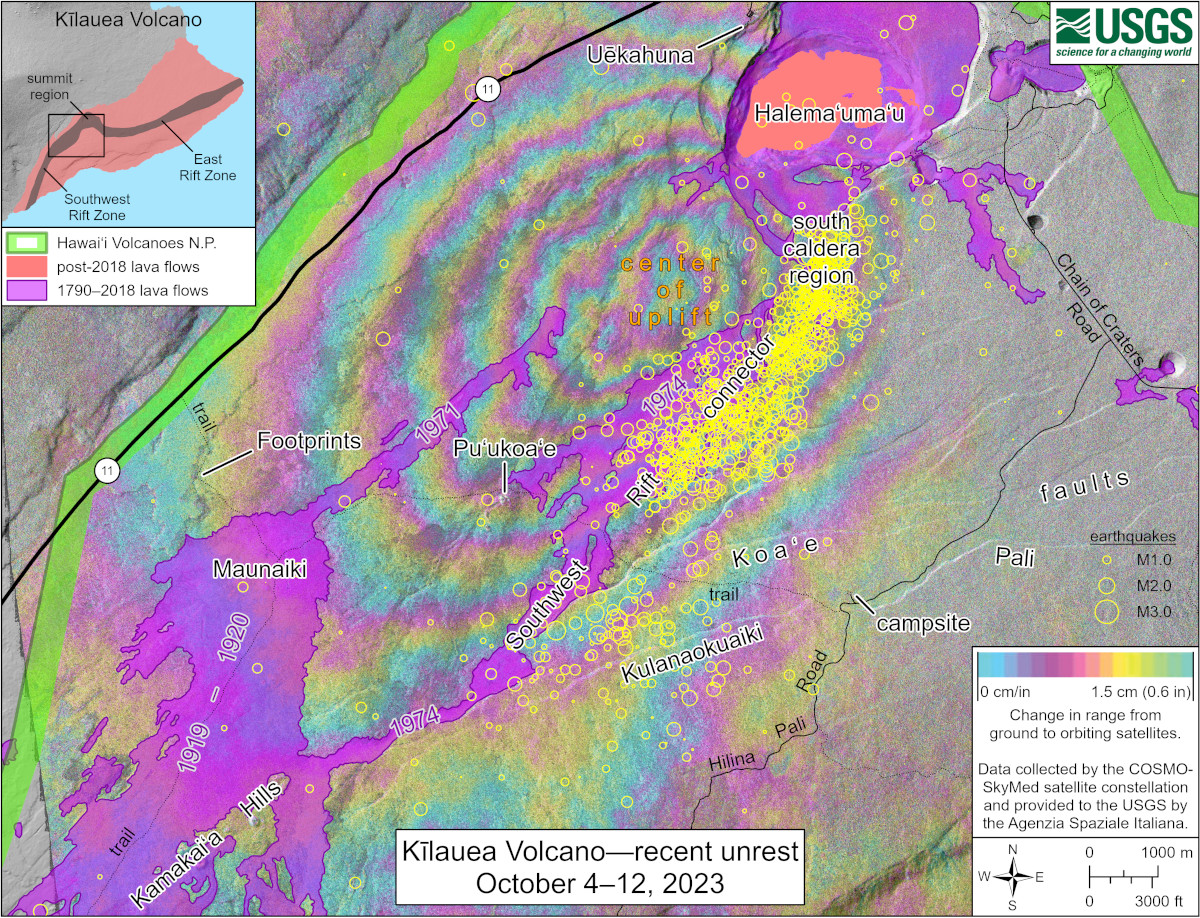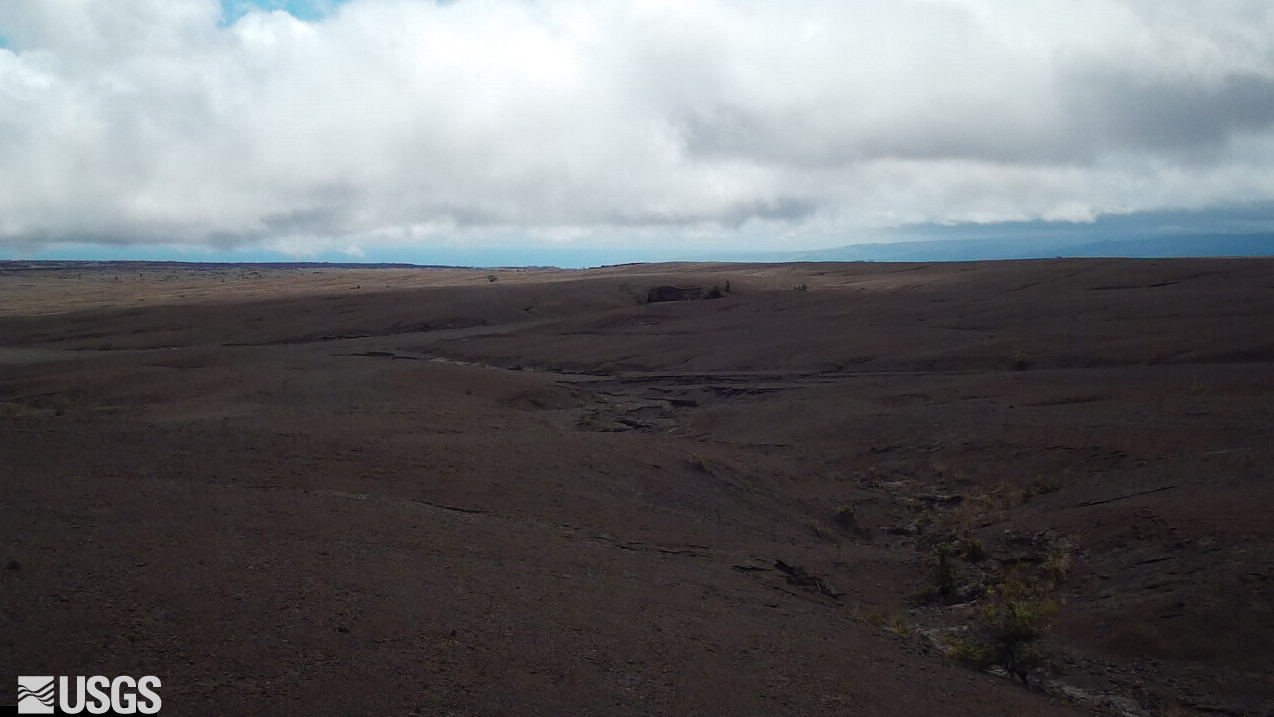(BIVN) – Kīlauea volcano is not erupting, and on Saturday scientists reported that the intrusive event in the area south of the summit caldera that began last week is coming to an end.
“Earthquake and ground deformation rates beneath the southern part of Kīlauea’s summit caldera and extending to the southwest have decreased dramatically over the past 48 hours,” the USGS Hawaiian Volcano Observatory reported. The Volcano Alert Level remains at ADVISORY.
From the October 14th USGS HVO update:
Summit Observations: The major intrusive event that has been ongoing beneath the area extending from the southern part of Kīlauea caldera southwest to the Koaʻe fault zone appears to have slowed significantly or stopped. A dramatic drop in earthquakes, from a peak of over 250 per day last week, to only 27 recorded in the past 24 hours. These earthquakes were at depths of 1-4 km (0.6-2.5 mi) beneath the surface.
Summit tiltmeters recorded an abrupt change in tilt magnitude and direction, in the last 48 hours, away from the seismically active area, thus signaling ground deformation associated with the intrusive event ceased. These observations suggest that new magma supply to the intrusion below the surface south of Kīlauea’s summit caldera has slowed greatly or stopped. However, inflation at the summit of Kīlauea remains high and has nearly returned to the level seen just before the last eruption on September 10th.

USGS: “This map shows recent unrest in Kīlauea’s summit region. Colored fringes denote areas of ground deformation and yellow circles denote earthquake locations.”
Currently, the Uēkahuna summit tiltmeter located north of the caldera recorded very slight deflation over the past 24 hours. The Sand Hill tiltmeter, located just south of the caldera, is showing a flat tilt trend. Sulfur dioxide (SO2) emission rates remain low and were measured at a rate of about 100 tonnes per day on October 6. Other monitoring data streams, including webcam views, do not show any significant changes.
Inflation at the summit of Kīlauea remains high and has nearly returned to the level seen just before the last eruption on September 10th. Seismicity and ground deformation rates are likely to begin increasing again in the near future, and HVO continues to monitor the summit region of Kīlauea volcano closely.
Rift Zone Observations: No unusual activity has been noted along the East Rift Zone or Southwest Rift Zone; steady rates of ground deformation and seismicity continue along both. Measurements from continuous gas monitoring stations downwind of Puʻuʻōʻō in the middle East Rift Zone—the site of 1983–2018 eruptive activity—remain below detection limits for SO2, indicating that SO2 emissions from Puʻuʻōʻō are negligible.


by Big Island Video News1:10 pm
on at
STORY SUMMARY
HAWAIʻI VOLCANOES NATIONAL PARK - Over the past 48 hours, scientists say earthquake and ground deformation rates in the area south of the Kīlauea summit caldera have dramatically decreased.